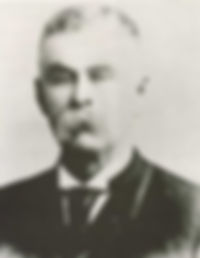Commercial Architecture Snapshot: Converting Converse Mill to Lofts
- Jones Pierce Architects
- Feb 7, 2024
- 3 min read
Updated: Nov 15, 2024

OPPORTUNITY: Adapt a former textile mill, located in Spartanburg, SC, to one-, two- and three-loft apartments, preserving and renovating the building’s interior and exterior as much as possible, creating living areas in the annex and opening the mill building's roof to develop an open-air courtyard.
CLIENT: Experienced developer specializing in renovating old Southern mills.
OTHER PROJECT INFLUENCERS: State Historic Preservation Office, US Secretary of Interior’s Historic Preservation Standards and US Department of Housing and Urban Development (HUD).
OUR EXPERTISE AREAS:
Historical preservation
Adaptive reuse of commercial structures
Renovation of interiors and exteriors
Zoning and permitting
CURRENT PROJECT STATUS: Renovation work is complete; awaiting the Certificate of Occupancy.
UPCOMING MILESTONES: Tenants should begin moving in March 2024.
The Back Story
The late nineteenth-century Converse Mill, once a producer of textiles, is tucked along the Pacolet River in the rolling hills of upstate South Carolina. Located six miles northwest of downtown Spartanburg, Converse Mill has a storied past. It was built and rebuilt several times over its 120-plus years, cementing its place and presence in local history.
After sitting neglected and untouched for years, a developer with expertise in old mills looked to reinvent the weary property into luxury living apartments with historical charm. His project required the expertise of a talented, experienced team to fully develop his idea for loft-style apartment homes at this unique location. And our Jones Pierce Architects team was awarded the project because the developer knew us from another mill project and asked us for a renovation proposal.

Initial First Impressions
When we first began our work on Converse Mill, we took on the full opportunity and the many challenges a huge project like this presented.
The mill’s ruins consisted of old granite retaining walls about two feet thick sitting near the dam that once generated power for the mill. The five-story masonry mill was initially constructed with heavy timber, a 14-foot clearance inside and massive 12-foot original windows. Most derelict buildings on the property were torn down except the mill and an adjacent two-story annex built from wood, brick and steel.
In 2014, we began working with the US Secretary of Interior's Historic Preservation standards to qualify for the project’s HUD financing. (HUD provides unique programs with specific requirements stipulating using their standards in exchange for funding.) We also worked with the State Historic Preservation Officer, the person responsible for helping to save historic places that matter and partnered with local historical groups.
To understand Converse Mill’s future, we had to know its past. We sourced dated mill photographs and poured over the images, noting large and small details, like the building’s original configuration and the white-trimmed windows. These photos, which captured the incredible features of the mill and the annex before they were lost to time and decay, played a crucial role in our plans for the property that was to be called Converse Mill Lofts.
“Before" and "During” Images, With “Afters” Coming Soon











Ready for Prime Time … and Residents!
Last fall, our work on Converse Mill wrapped up with the installation of a gorgeous new pool, parking lot paved and landscaping added to compliment the complex’s beautiful surroundings. (Coming soon – we’ll update this article with photos of the beautiful new and historically old Converse Mill Lofts. For now, see loft unit floor plans.)
Today, a full decade from our first strategic meeting with the developer, Converse Mill Lofts is at last ready for tenants. (This type of work takes time and involves many parties. And, remember, we went through a pandemic.)
The immense Converse Mill project gave us the opportunity to demonstrate our architecture firm’s fit as the right partner capable of navigating the many governmental requirements and considerations needed to preserve and renovate a historic structure. By the way, it’s only one of the many historical projects we’ve taken on over the 25-year history of our firm. The Gastonia, NC, Loray Mill, is one example.
Our Commercial Architect Team is Here to Help
If you’re a new or experienced developer who could benefit from having Jones Pierce Architect’s expertise on a historic renovation or multi-family project like Converse Mill, contact Cooper Pierce at 404.446.3882 or email us to schedule a call. We want to get to know you, hear your plans and share how we could help.
Our commercial architecture design portfolio includes highlights from these types of projects:
Adaptive Reuse
Amenities
Condos
Food Service
Infill Housing
Mixed Use
Non-profit
Rebranding
Renovation
About Jones Pierce Architects
Founded in 1997 by Bryan Jones and Cooper Pierce, our award-winning, Atlanta-based team includes architects, construction professionals and interior designers who partner with companies and individuals in Georgia, Alabama, Florida, North and South Carolina and Tennessee.
